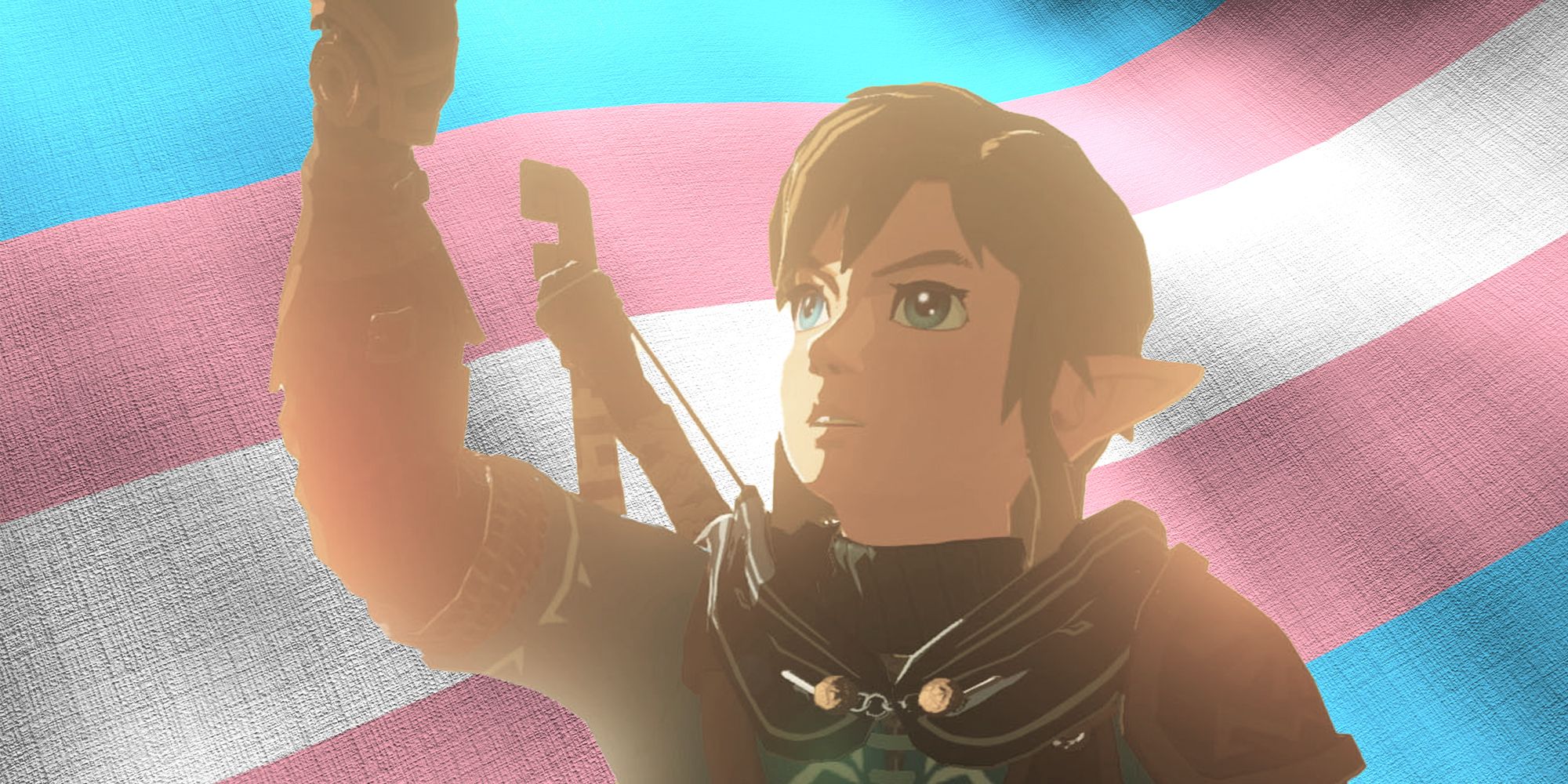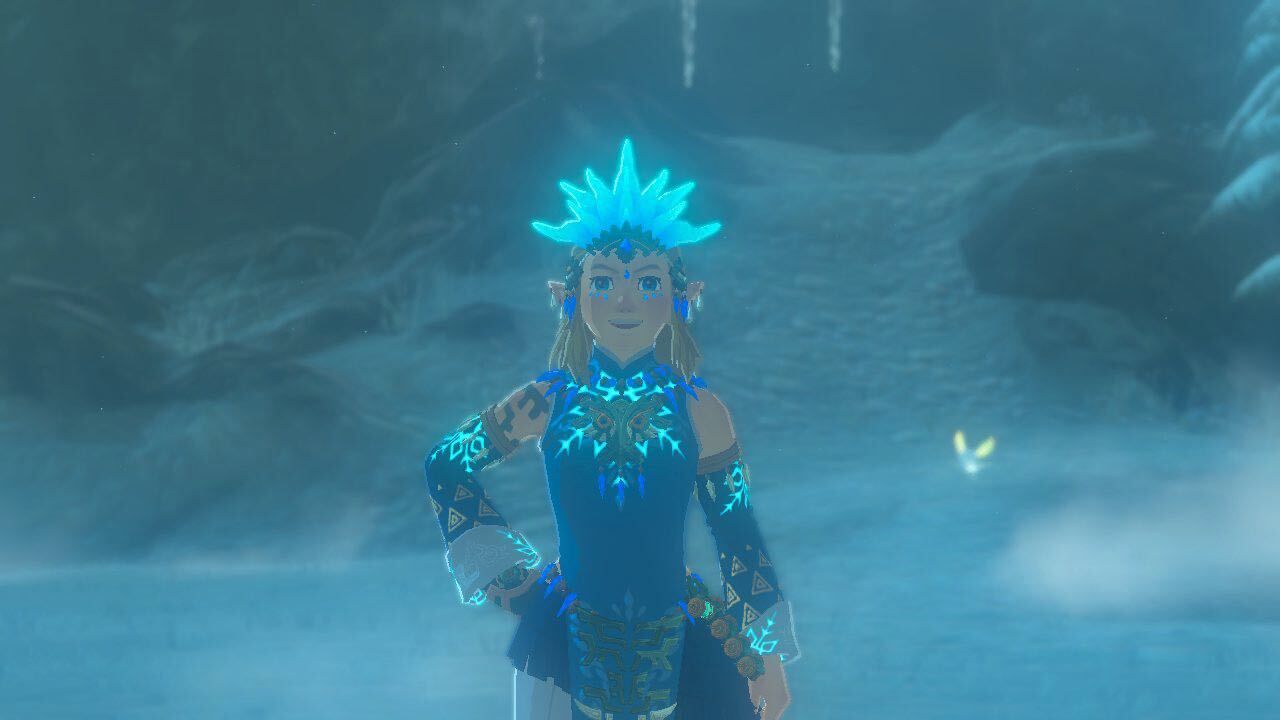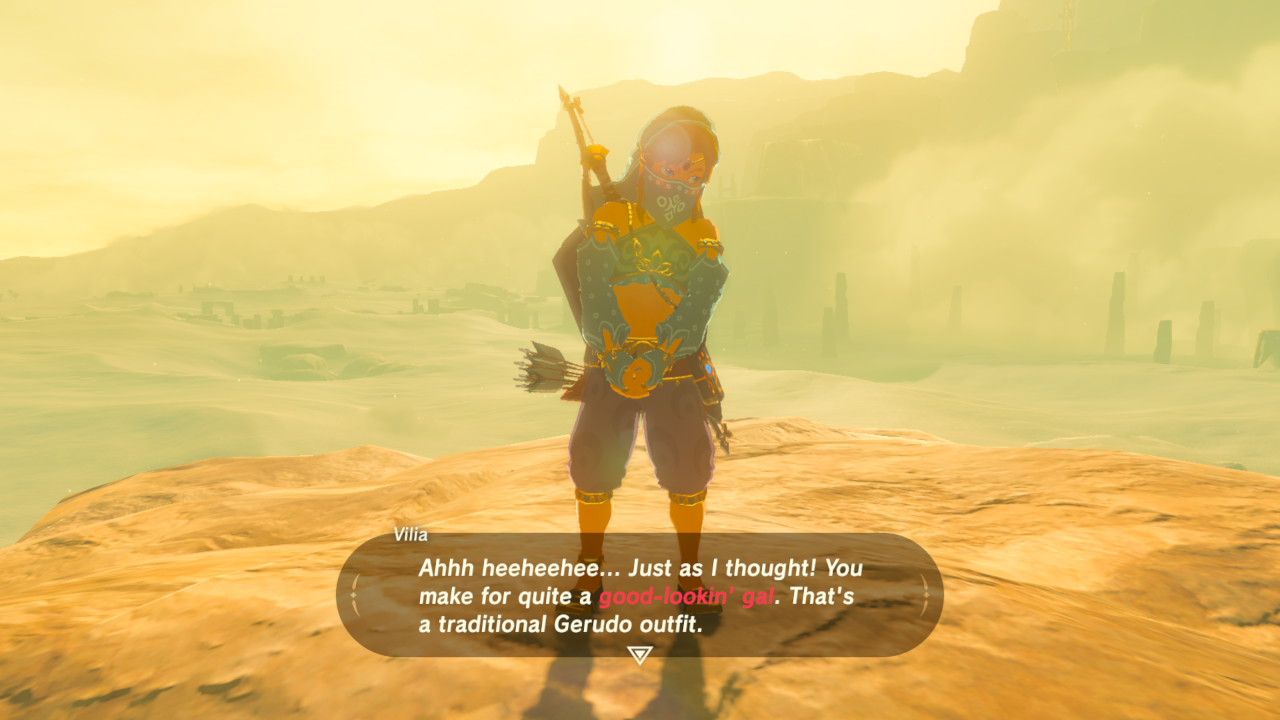Link has always been an androgynous reflection of the player. A silent, optimistic hero who is destined to save the world and protect Princess Zelda from evildoers that loom over Hyrule. While the character always goes by masculine pronouns and is viewed as a man by all those he stumbles across in each game, Link has often acted in defiance of gender norms.Most games allow him to act, dress, talk, and express himself in ways that rally against cisgender normativity. He is never once destined to exist as a symbol of heroism bound by masculinity. This freedom of expression is liberating.I wrote about the value of Link’s androgynous presentation years ago, but with the release of Tears of the Kingdom it seems this approach to gender has only been solidified. It’s the continuation of a vision that began when Breath of the Wild was revealed back in 2014. This trailer was brief, following Link as he looked out upon the sprawling green fields of Hyrule while atop Epona. Suddenly, a Guardian springs into frame and chases him through the forest in a scene that deliberately mirrors Studio Ghibli’s Princess Mononoke.
The final sequence of shots has our hero leaping into the air and removing his hood before firing an arrow at his awaiting enemy. Luscious visuals and fantastical new world put aside, what really stood out was Link himself. Or herself, since there was a notably feminine look to the character that we had never seen before, and certainly felt deliberate. This is where it all began, a journey of queer exploration that dared to ask if this coming vision of Zelda would not only flip the gender of this iconic character, but perhaps go even further.
Fans spent the next several years theorising whether Link was no longer a man, or if the person we glimpsed in the debut trailer wasn’t Link at all - but Zelda. The truth it turns out was far less exciting, although the real joy came from seeing how excited queer audiences were to feel represented even through theories alone, and that whatever form Breath of the Wild would eventually take it seemed to embrace the fluid nature of identity.
The full experience only cemented this. Link is androgynous in his look no matter what clothes we throw on him, and some aspects of the world serve to reinforce an idea that even without our input, this interpretation rides the lines of gender expression in a way that deliberately hones in on neutrality. When he is asked to disguise himself as a Vai before infiltrating Gerudo Town - a place where men (Voe) are forbidden - Link never feels ashamed or embarrassed for having to cross dress.
He blushes and looks away when told how attractive it makes him, while passers-by are quick to compliment our feminine hero regarding his looks, and in some cases even try to flirt with him. I was yet to come out as trans when Breath of the Wild first released, so having a game which rebelled against the gender binary, despite not being explicit in its queerness, was a powerful thing to witness.
I’ve yet to find this armour set in Tears of the Kingdom, although other outfits like the Frostbite Armour fill a similar purpose if you use them for fashion instead of application - and let’s face it, who doesn’t? Take away the trousers and headpiece, and you’re left with what is basically a flowing blue dress that hugs Link’s hips and flows gracefully down his legs. It’s cute, and already the internet is filled with adorable snapshots and fanart embracing the feminine beauty Link exudes regardless of the male identity thrust on him.
The same sentiment rests with abandoning femininity too, or residing in the middle without an assigned binary where anything is impossible. Link becoming a hero by embracing this manhood once rejected by a bigoted society only to save the world and become respected beyond measure carries a powerful message, not to mention how badass he’d look with top surgery scars peeking out from his archaic tunic. I tend to rest in the middle. Even though I take hormones and now present as a woman in my everyday life, she/they pronouns are my preferred means of being addressed and how I react to dysphoria and the person I wish to be on a day-to-day basis is known to change.
Gender is complicated, but it’s also brave, beautiful, and anything we want it to be. Tears of the Kingdom’s unrestricted freedom in its exploration and puzzles is also reflected in the character we inhabit. Link is a silent spectre who is immediately recognisable to millions, and also a blank canvas to paint ourselves onto unrestricted. Mixing and matching outfits to compliment how he looks or is viewed by those around him, or projecting abstract stories and traits into where he’s been and eventually will go and how that might be folded into the person he becomes.
Link isn’t canonically queer, but never needed to be in order to evolve into a queer icon. Generations of players who had to suppress their LGBTQ+ identities grew up with him, and now those following in their footsteps who are far more vocal about whom they love and want to be are finding joy in his presence all over again. The Legend of Zelda has brought us a hero in a franchise so often afraid of change, but with Breath of the Wild we finally saw this embraced alongside a fluid, charismatic, and hopeful protagonist that can be shaped into anything we want him to be. Producer Eiji Aonuma said as much himself, about how Link was designed to be interpreted as anything, his outward male identity nothing more than a foundation for us to build upon. A means to create fantasies of our own which always matter most.



